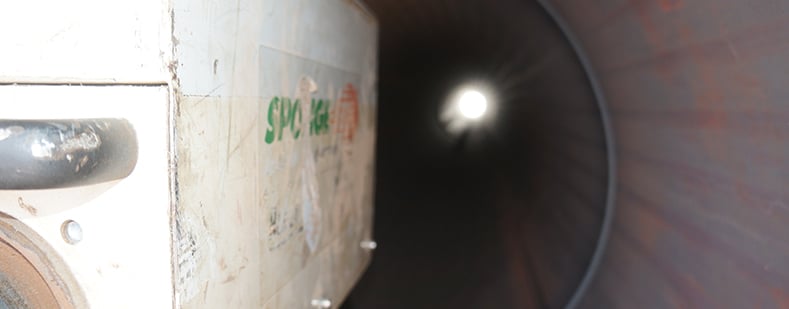Worker safety is the number one priority on all abrasive blasting jobsites. Robotic abrasive blasting is one of the best ways to keep blasters safe while achieving optimal productivity and quality. Overall, robotic abrasive blasting with Sponge Media is a safer alternative to manual blasting in many situations.
Limiting Confined Space Entry
In recent years, confined space entry has received national attention as one of the leading causes of worker deaths. Limiting confined space entry is a huge benefit to robotic abrasive blasting that contractors, asset owners, and the industry as a whole, is embracing. Abrasive blasting robots can be operated remotely from outside the blast area, allowing for greater worker safety. According to Ted Valoria, vice president of Sponge-Jet, North America, robotic blasting is simply a better choice for abrasive blasting in confined spaces. “Confined space entry is on the national health and safety hit list, so anything that can be done to reduce workers entering confined spaces is a good thing for workers, and for the industry.”

Decreasing Injuries in the Blast Area
Robotic abrasive blasting also lessens the chances of workers being injured on the job, regardless of the location of the blasting. With a robotic blaster, the risk of eye injuries (one of the highest occurring abrasive blasting injuries) is dramatically reduced. “When blast operators do not having to stand at the nozzle, there is much less risk of fatigue. This is important because when blasters are fatigued, injuries are much more likely to occur,” said Valoria.
Limiting Exposure
Commonly, abrasive blasters perform their tasks with some form of exposure to hazardous materials. It goes without saying that limiting the exposure to these hazards is the best possible way to keep workers safe from potential short and long-term harm. Permissible Exposure Limits (PELs) are the legal limits, as defined by OSHA, for the degree to which workers may be exposed to chemicals (and other hazards, such as noise) without suffering harm. “Because robots are operated remotely, workers are not exposed to harmful contaminants while blasting.
Protecting Workers
Although PPE is an absolute must on sponge media abrasive blasting jobs, with robotic blasting, workers do not have to wear additional safety apparel or accessories to be kept safe. “Manual abrasive blasting requires a blast hood, Tyvek suit, gloves, and boots. When operating blast nozzles remotely, the required PPE is often substantially less” said Valoria.
A Safer Alternative
With the world-wide focus on worker safety and protection, products like Sponge-Jet’s Robotica are becoming more and more prevalent in the industry. This coupled with the increased speed, blasting productivity and cost-saving advantages of robotic abrasive blasting make it an excellent alternative to manual blasting on select projects where confined space and/or exposure are a concern.








